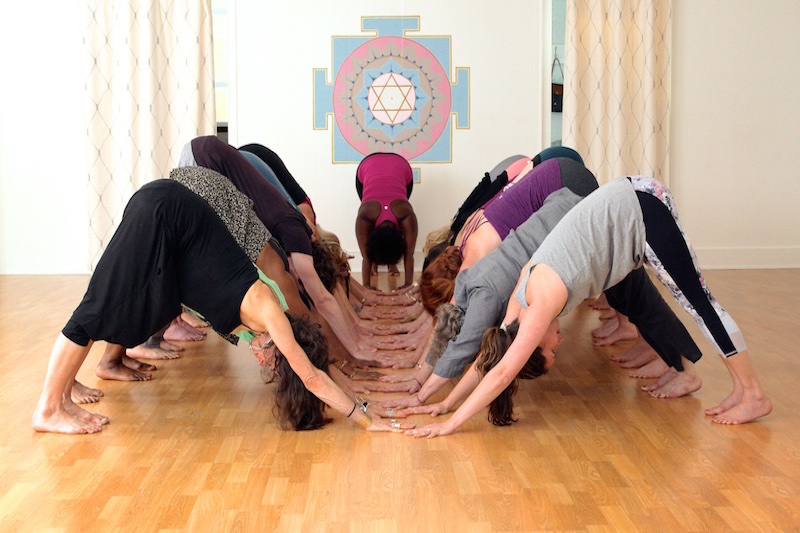An in-house yoga class is becoming a popular perk for many businesses, enabling their employees to reap the plentiful benefits of yoga without having to even leave the office.
But how do you go about setting up, filling and maintaining a weekly class?
Sally Lovett, yoga teacher and founder of Stretching the City draws on her 8 years of experience delivering corporate yoga classes to share her top tips.
Creating your office yoga studio
Most of Stretching the City’s corporate yoga classes take place in the office boardroom, but a decent sized meeting room or a clean canteen can also do the job. When considering how many people you can fit in the space, bear in mind you typically need 21 sq feet per yogi (based on a standard sized 2 x 6 ft yoga mat.)
Office lighting can often be horribly bright and harsh. If that’s the case, we switch the overhead lights off and use a couple of cheap desk lamps on the floor to create a cosy, relaxing glow.
Unless your yoga teacher is travelling by car and able to bring a boot-full of mats, you’ll need to buy your own. We recommend the Yogamatters sticky mat for a great quality, reasonably priced mat.
Sourcing your yoga teacher
There are a number of different teaching bodies and accreditations and all require a minimum of a 200 hour yoga teacher training to be certified. Ask to see copies of your teacher’s certification and insurance documents, and make sure your teacher is insured for both professional indemnity and public liability. Whilst a number of teachers are, it’s not compulsory for teachers to be first aid trained. Check with your health and safety team to find out whether teachers running an out of office hours class will need to be first aid trained.
Planning your class
Decide when you’d like the class to take place, be it before or after work, or during your lunch hour. Consider the culture of your company – if meetings are often scheduled during lunch hours, a class out of office hours may work better. Or, if everyone dashes home to their families at 5pm every evening, a morning or lunchtime class may prove more popular.
What to wear
To practice yoga simply wear something comfortable you can move in. My favourite is a pair of leggings and a vest. Yoga is practiced barefoot, but if you feel uncomfortable baring your feet to your colleagues, grab a pair of non-slip ToeSocks to practice safely.
Recruiting your classmates
Now you’ve organised your office yoga class, you need to fill it with some yogis! Promote the classes on your company intranet, on posters on the back of loo doors or in the staff kitchen, send out calendar invites, mention it in meetings and get your colleagues on board to help spread the word. If you can, open the class up to your whole office and use this an as opportunity to get to know colleagues outside of your direct team.
Maintaining the momentum
To really reap the benefits of yoga, try your best to attend every weekly class. Give your teacher feedback along the way, letting him or her know your favourite, or less favourite parts of the class. Have an open mind to try new poses, pranayama (breathing practices) and meditation techniques and I have no doubt you will be hooked on yoga for life.
From: Yoga Matters



